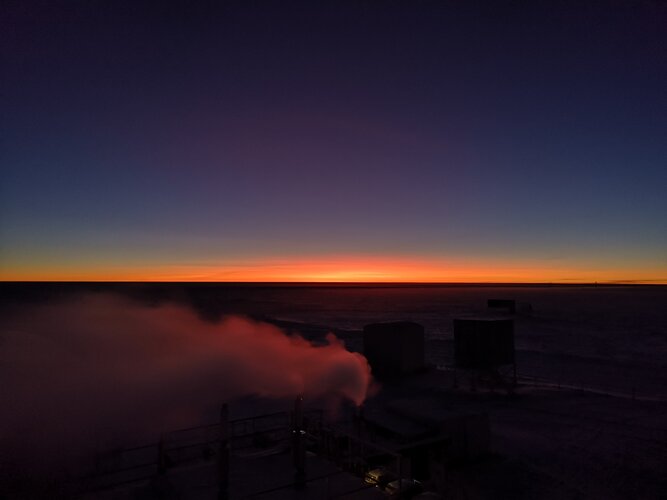A fortnight after the 21 June winter solstice in Antarctica, the crew at Concordia Research Station are slowly welcoming the return of sunlight. This photo was taken by ESA-sponsored medical doctor Nick Smith on 1 July at noon.
The 12-member crew at Concordia, located at the mountain plateau called Dome C, have spent the last few months in complete darkness: the sun disappeared in May and will not be fully visible again until mid-August. This image of high noon signals the beginning of the end of winter on the remote continent.
Confined in extreme conditions, the crew at Concordia – one of three Antarctic stations inhabited all year long – find solace in traditions. Midwinter often includes well wishes from other Antarctic and sub-Antarctic stations as well as communal projects. The crew this year brewed their own beer to mark the occasion.
As well as offering around nine months of complete isolation, Concordia’s location at 3233 m altitude means the crew experience chronic hypobaric hypoxia – lack of oxygen in the brain. Temperatures can drop to –80°C in the winter, with a yearly average of –50°C. The temperature at the time of this image was –65°C, with wind chill at about –80°C.
As a station set in Earth’s harshest space, Concordia is an ideal stand-in for studying the human psychological and physiological effects of extreme cold, isolation and darkness.
Nick is working on seven experiments, looking in general at the effects of isolated, confinement and extreme environment, analogous to a lunar or martian station, on mindfulness, cognition, risk taking, decision making, immune systems, stress, eye health, sexual security, and social dynamics. He has collected many samples and questionnaires over the past nine months.
The crew are headed for the home stretch of their Antarctic residency which will bring not only sunlight but also fresh crew. Researchers arriving for the summer campaign means a lot of preparatory work for the current crew.
In the next few weeks, they will need to plough the skiway, remove snow around the station, deep clean, and in the case of Nick, prepare his samples for return to Europe.
Follow the adventures at Concordia on the Chronicles from Concordia blog.



 Image:
Image: